DC Comics is trying something new. In the wake of their Rebirth initiative, the publisher has rapidly expanded its content to include diverse new imprints such as Young Animal, Wildstorm, Black Label, Ink, and Zoom. As their lineup expands, it can be hard to figure out what to pick up each week. That’s what the Comics Beat managing editor Alex Lu, entertainment editor Kyle Pinion, and contributor Louie Hlad are here to help you with!
THIS WEEK: Louie ruminates on the many versions of the Justice League team & book as he considers the strengths of the recently completed Justice League of America series. Also: A look at DC’s newest team of misfits, The Terrifics!
Note: the reviews below contain **spoilers**. If you want a quick, spoiler-free buy/pass recommendation on the comics in question, check out the bottom of the article for our final verdict.
 Justice League of America #29
Justice League of America #29
Writer: Steve Orlando
Artist: Hugo Petrus
Colors: Hi-Fi
Letters: Clayton Cowles
The Justice League is a sprawling team concept, often too big for one series. Indulge me with a bit of historical nostalgia before we discuss the current team(s).
The original Justice League of America title ran from 1960 until 1987 and lasted 261 issues, plus a handful of annual specials. The membership evolved from time to time as heroes joined, left, and rejoined periodically, but the story for the most part went on uninterrupted in a continuous line. Threats arose and the available heroes banded together to protect the earth and sometimes the universe. Then came the era of crossover events, title changes, and renumbering, and things started to get complicated.
The title got its first relaunch and a new #1 issue in 1987, after the Crisis on Infinite Earths crossover event. The new book was branded as Justice League (dropping the “of America”) and featured a lighter tone along with a notably different cast. Absent from the roster were Superman, Wonder Woman, Flash, Aquaman, and most of the other well-known characters who had been featured in the book for decades. Batman and Martian Manhunter put together a new team which included Black Canary, Captain Marvel, and some lesser known superheroes like Doctor Light and Guy Gardner. This book was as much about exploring team dynamics as it was about grand superheroic action scenes. If you’ve ever seen classic issues of Booster Gold and Blue Beetle guffawing over a practical joke, this is the series you were reading.
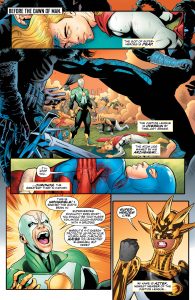
As a comics collector with completionist syndrome and mild OCD, this was all exhausting to keep track of. But as a comics lover, it was exhilarating. In the early 1990’s we had FIVE different ongoing Justice League titles that featured over fifty different heroes throughout. This period will be forever referred to as “the good old days”.
All of these series came to an end around the time of the DC crossover event Zero Hour. In 1997, DC launched Grant Morrison’s JLA which brought together the classic “Big 7” cast of Superman, Wonder Woman, Batman, Green Lantern, Flash, Aquaman, and Martian Manhunter to fight truly epic threats on a galactic scale. On second thought, these might be the good old days. Since then we have seen a few more reboots and several more spin-off teams (JL Elite, JL Dark, JL United, etc.), each with a unique feel and premise.
I guess my point is: there’s always room for more Justice League.
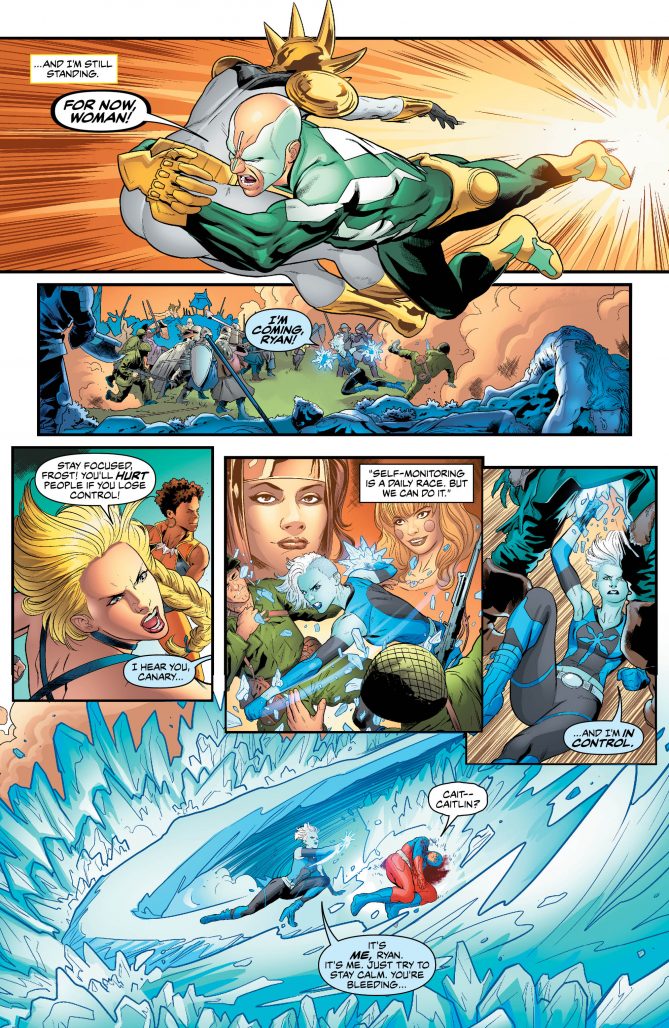
Every issue of Justice League of America has been written by Steve Orlando, with a rotating cast of artists including Hugo Petrus, who provides pencils and inks for this final story arc. The team roster has stayed consistent over thirty issues — Batman formed the team and brought on veterans like Black Canary and Vixen to act as field leaders. But the interesting part of this iteration of the team is the wildcards.
There’s the supervillain. Killer Frost began her long road to redemption as a new recruit to the team. She dropped the word “Killer” from the name and sought to resist the vampiric urge to feast on others’ body heat, sometimes with limited success. Her struggles throughout the series have been endearing and tragic. She even starts up a conflicted romance with a teammate.
There are some new players in The Ray, The Atom, and Aztek (a later addition). Each in their own way, these heroes are learning the ropes and trying to prove themselves worthy to be on a team with such a rich and weighty history. The original Atom, Ray Palmer, makes some appearances and gives Ryan Choi his full confidence and encouragement to go make a name for himself, and then gets out of the way so Ryan can shine. The Ray and Aztek have a turf war of sorts as they work out how to share being defenders of their hometown, Vanity City. These younger heroes lend the book a feeling of openness and possibility that Superman and Wonder Woman could never give.
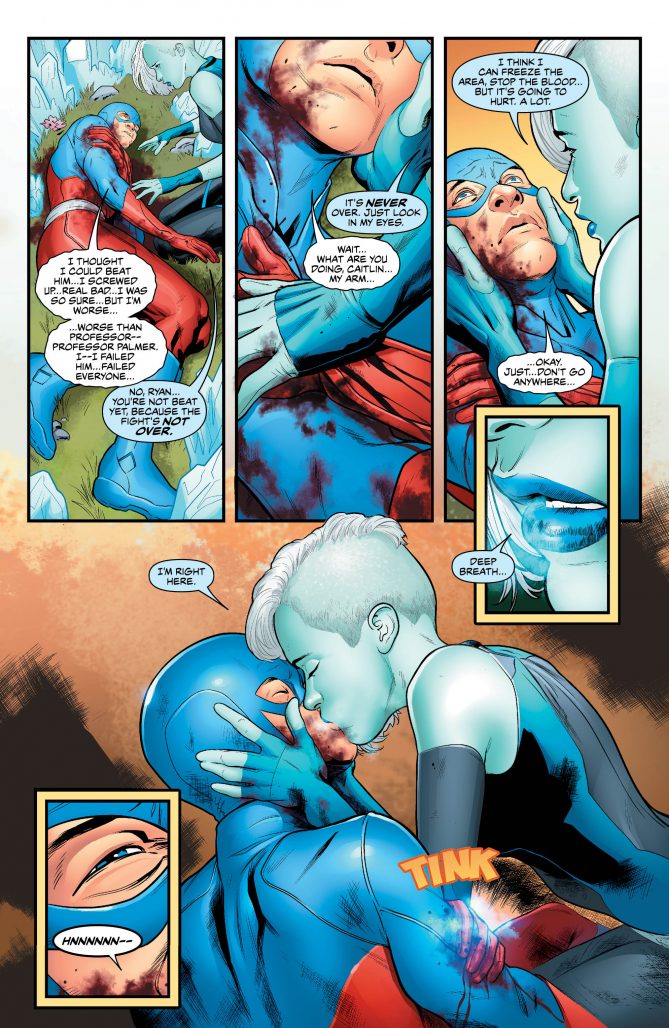
The series features plenty of fun callbacks to previous Justice League encounters. Grant Morrison villains like Prometheus and the Queen of Fables have their story arcs, as well as creations from the International days like Lord Havok and the Extremists. Atom fans are served especially well with the inclusion of the time villain Chronos and an extended jaunt through the microverse. The biggest surprise of all was the inclusion of Alan Moore’s Promethea, a move that reminded me of the time the JLA met Dream of the Endless.
Is Justice League of America for everyone? Of course not, but that’s kind of the point. The Justice League can be many things and one book isn’t enough to explore such a rich and multi-faceted concept. As this series has come to its conclusion (this was the final issue), we prepare ourselves to welcome the next iteration(s) of the team. I hope the new stories can capture some of the unexpectedness and familiarity that this series balanced so well, and I hope they spawn many, many more books to come.
Verdict: Browse
 The Terrifics #3
The Terrifics #3
Storytellers: Joe Bennett & Jeff Lemire
Inks: Sandra Hope, Jaime Mendoza & Art Thibert
Colors: Marcelo Maiolo
Letters: Tom Napolitano
My favorite books are dense. I mean the ones that really hurt your brain as you try to wrap your head around all of the crazy stuff that’s going on. Dune. Ulysses. Anything by Grant Morrison. The harder a story is to understand and the more re-reads the sucker takes, the more likely I am to be hooked on it. Something about having to work for your entertainment just does it for me.
This isn’t that kind of book.
The Terrifics has a look and feel that, to me, hearkens back to an earlier period in comics. Superhero adventures used to be much simpler and more accessible than the hyper-involved plots that appear in many books these days. And while I’m a total sucker for a complicated and labyrinthine storyline, sometimes you just want to turn your brain off and enjoy a straightforward comic. This book is for anyone who skims through Doom Patrol and wonders: can’t we all just rattle off some pseudo-science and punch things?
This is a team that features only four members and less than a handful of supporting cast. You don’t need an awful lot of background to get into the story and needn’t be intimidated that the cover sports a Dark Nights: Metal crossover tag; there’s no substantive connection. The first three issues focus on seven characters who mostly stick around the Stagg Industries headquarters building. Unless you count a quick jaunt into the dark multiverse.
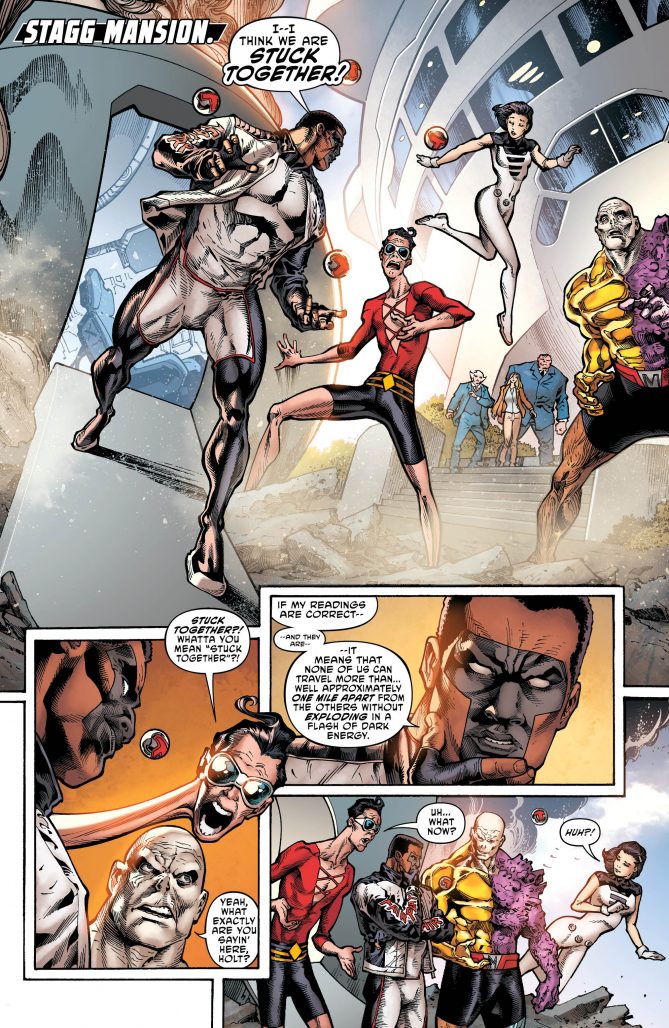
On the other end of the spectrum is Plastic Man, the chronic jokester. After being stuck dormant in the form of an egg for so long (Metal stuff, don’t ask) it’s nice to see him get to stretch his legs. And arms, and neck, and torso, etc. At one point he transforms his midsection into a sandwich and starts eating himself. He also tries to name the team “The Plastics” but thankfully nobody seems to go for it. About the only times Plastic Man isn’t joking is when he’s bickering with Metamorpho. For a team book, none of these guys seem to like each other very much. It’s endearing.
Speaking of our favorite elemental man, The Terrifics feels like a classic Metamorpho book more than anything else. That’s a compliment, by the way. The supporting cast are all very much tied to his origin story and remain unchanged from every other appearance you might remember. Simon Stagg is the rich, unethical business tycoon whose tinkering with unknown cosmic energies gets them into this mess. His daughter Sapphire is Metamorpho’s impulsive love interest who takes offense easily and wishes the two men in her life would just get along. In a comics universe that’s constantly being reinvented it feels as if time stood still for this group. Even Simon’s neanderthal henchman Java is back, slack-jawed as ever. If it ain’t broke, right? Ten bucks says the Orb of Ra makes an appearance by issue #20.
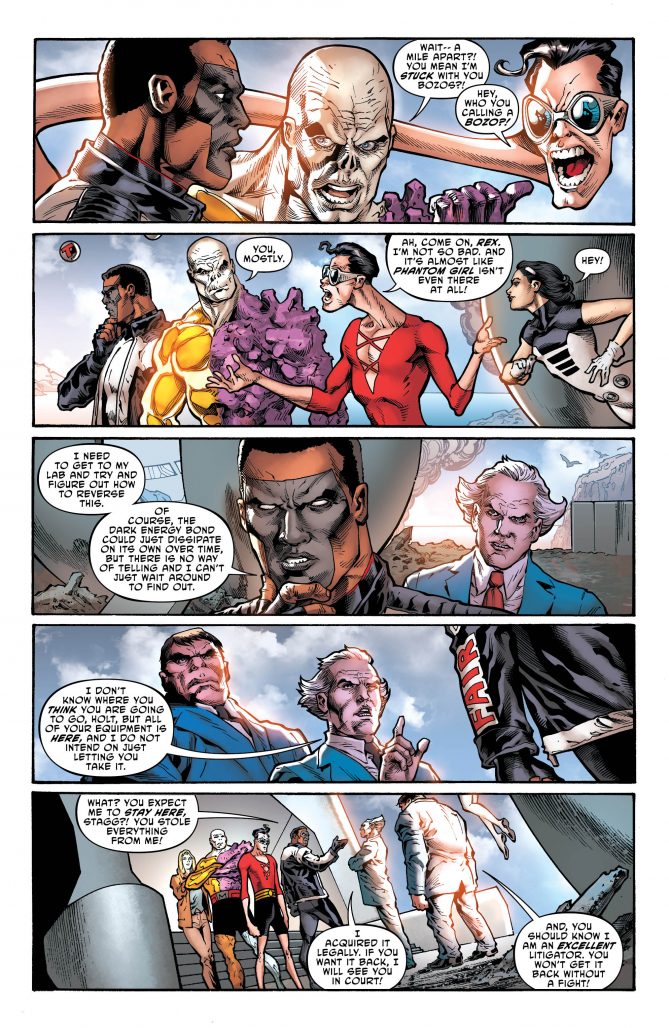
Other than setting up the rocky team dynamics and kind of shitty circumstances they’ve found themselves in, there’s not a lot more to this story yet. The focus on this book was always meant to be the art, and it delivers a pretty fun read. Though this issue features a lot of dialogue, Joe Bennett manages to make continually creative use of the two shapeshifters on the team. The colors are downright impressive, particularly the sunlight glinting off of Metamorpho’s metallic body in the outdoor scenes and all the glowing monitors in Mr. Terrific’s lab.
Overall, this is a visually entertaining story that puts a spotlight on team interaction as they are thrust into a series of sudden action scenes that are quickly resolved. The strength of the book is that it uses characters who aren’t involved elsewhere in the DCU, so it can remain self-contained and uncomplicated. Feeling like a pure strain of comics circa 1970, The Terrifics is the perfect team to rattle off some pseudo-science and go punch things.
Verdict: Browse
 Round-Up
Round-Up
- I had planned to do a full review of Doom Patrol #11 this week, but somehow I had way too much to say about it and decided to save it for a later article. There was a strange connection between Doom Patrol and Justice League of America this week — both addressed the death of Ahl, the “God of Superheroes” that was introduced in the Milk Wars crossover earlier this year. Seems like this is a pure coincidence caused by delays on the Young Animal title — while Doom Patrol takes place before (and directly leads into) the start of the Milk Wars, Justice League of America takes place after the end of that event. But both of them have a dead Ahl lying on the ground. The guy can’t catch a break.
- What do you mean I can’t review Hal Jordan and the Green Lantern Corps every week? Nonsense. The Corps is gearing up for one hell of a fight against the new Darkstar army and I won’t stand idly by. We’re steadily ticking down to the end of Venditti’s run at issue #50 and I hope it’s as spectacular as I think it will be.
- Darkseid got screwed again at the end of his final battle with Diana in Wonder Woman #45…but at least he’s not a baby this time.
- Mother Panic: Gotham A.D. continues to be a fun story, this time introducing the future versions of some well known femme fatales. The setting is a great choice — in a Gotham without a Batman, we have a Joker who seems directionless and the other main players have had to move on in whatever ways they can. Lots of fun cameos, though I have to admit I remain a little bit concerned about Violet’s hyper-violent kid sidekick.
- I’m really enjoying Mera: Queen of Atlantis, even more so than the last few issues of Aquaman. In this week’s third issue, Ocean Master and Mera settle their dispute in a surprisingly reasonable way and we finally get back to some underwater action. We also get a continuation of the history lesson on Xebel. Halfway through this miniseries, I can’t wait to see what’s next for Mera and Atlantis.
Miss any of our earlier reviews? Check out our full archive!


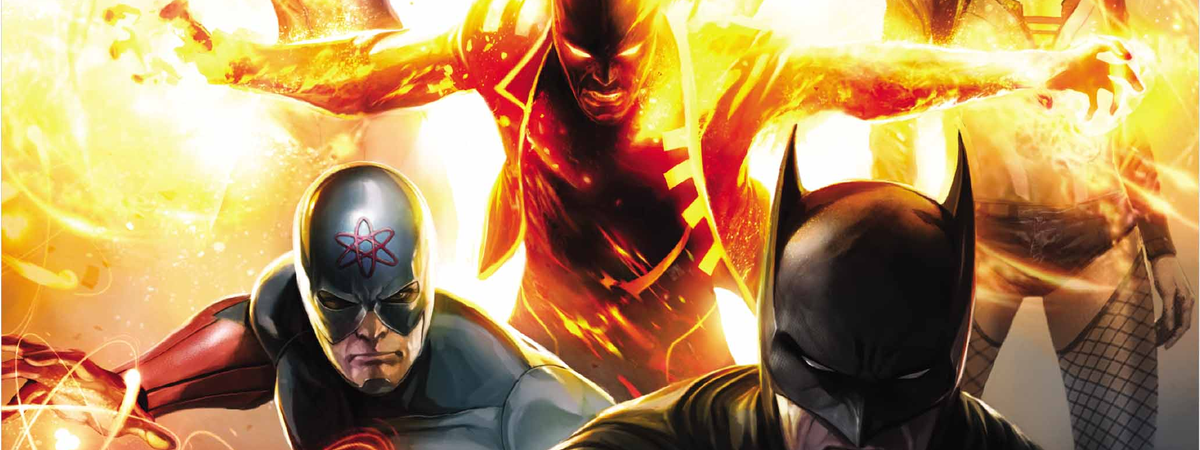
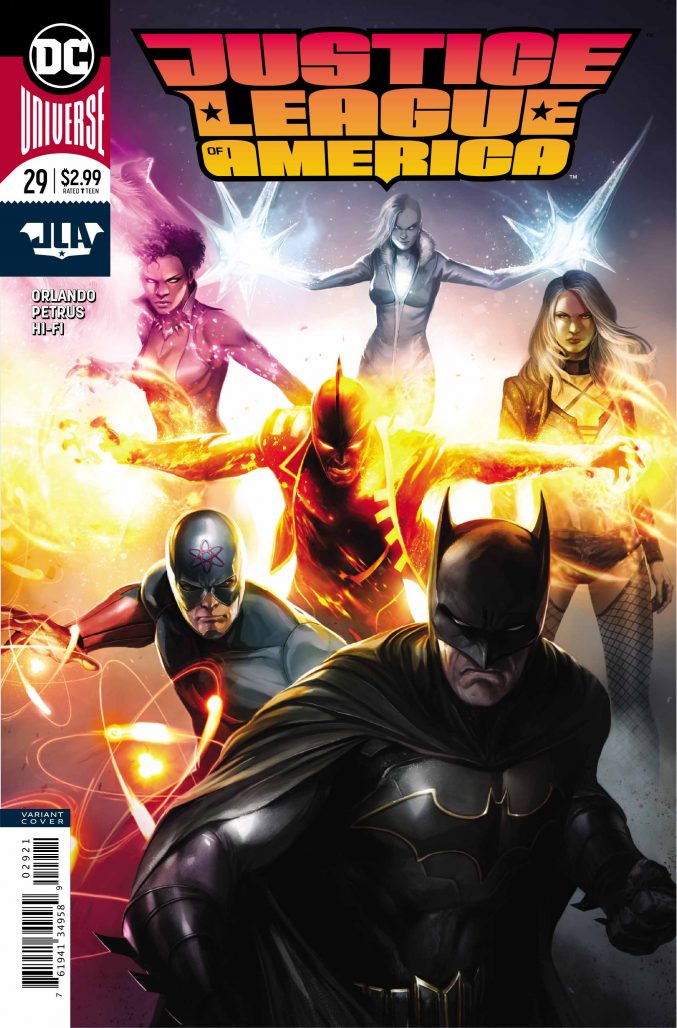 Justice League of America #29
Justice League of America #29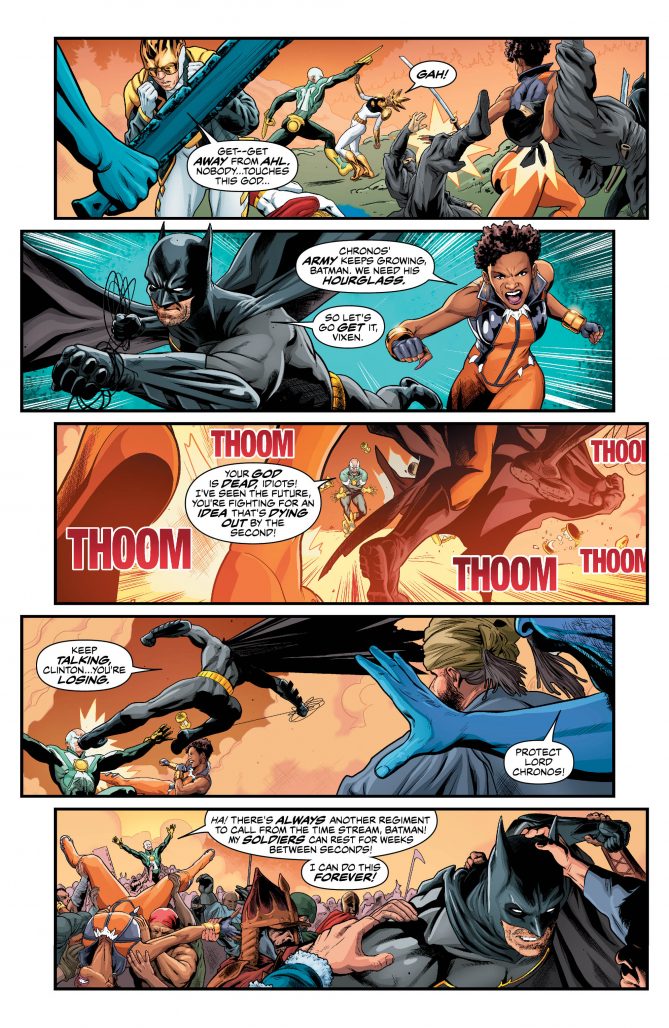
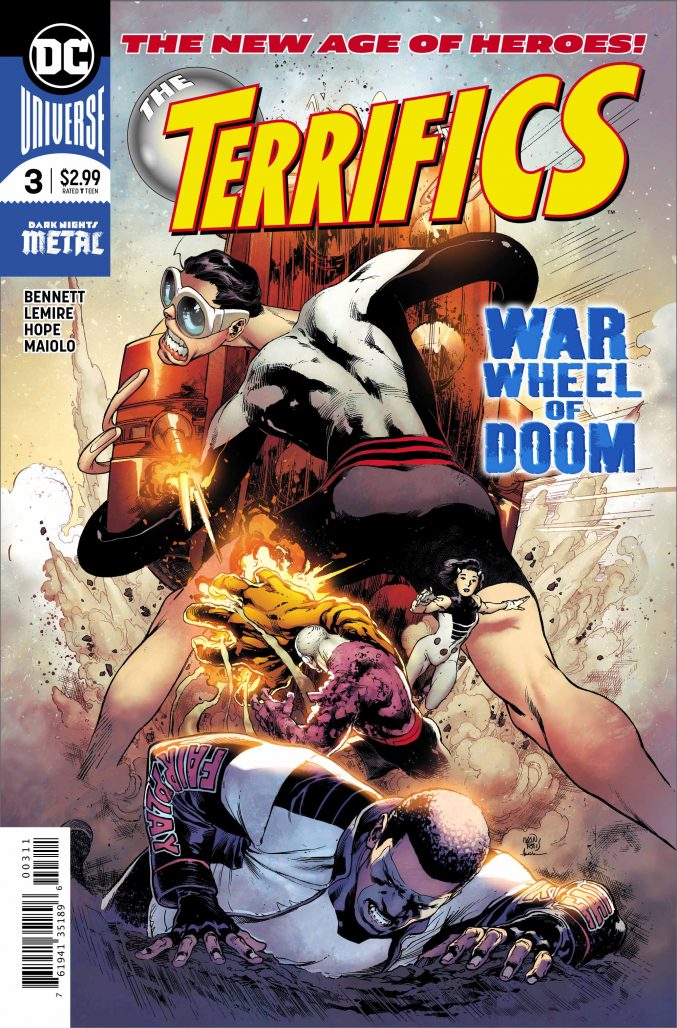 The Terrifics #3
The Terrifics #3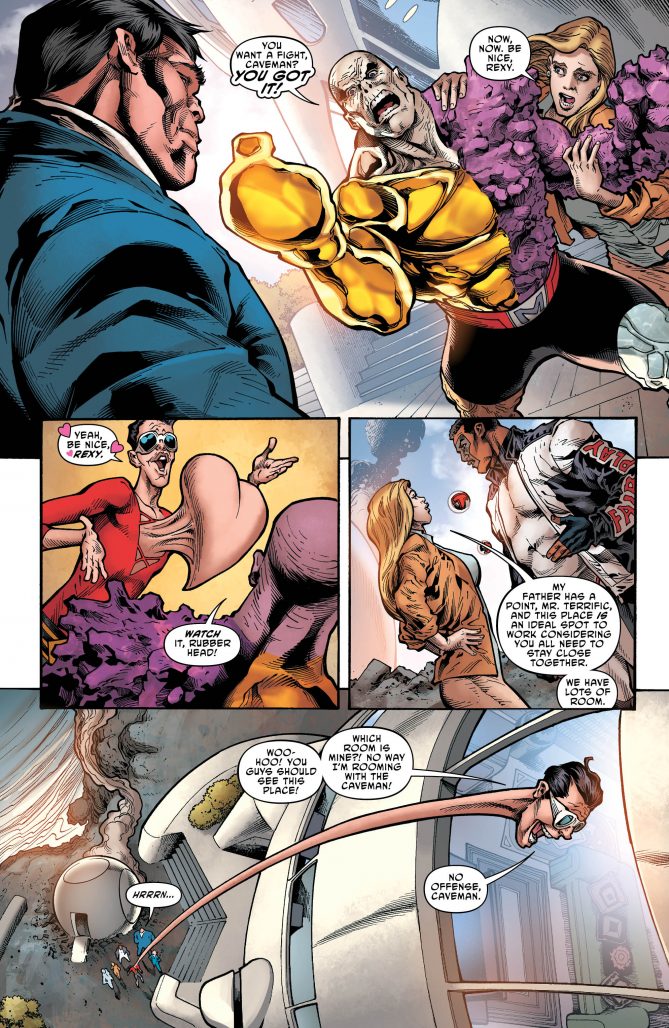
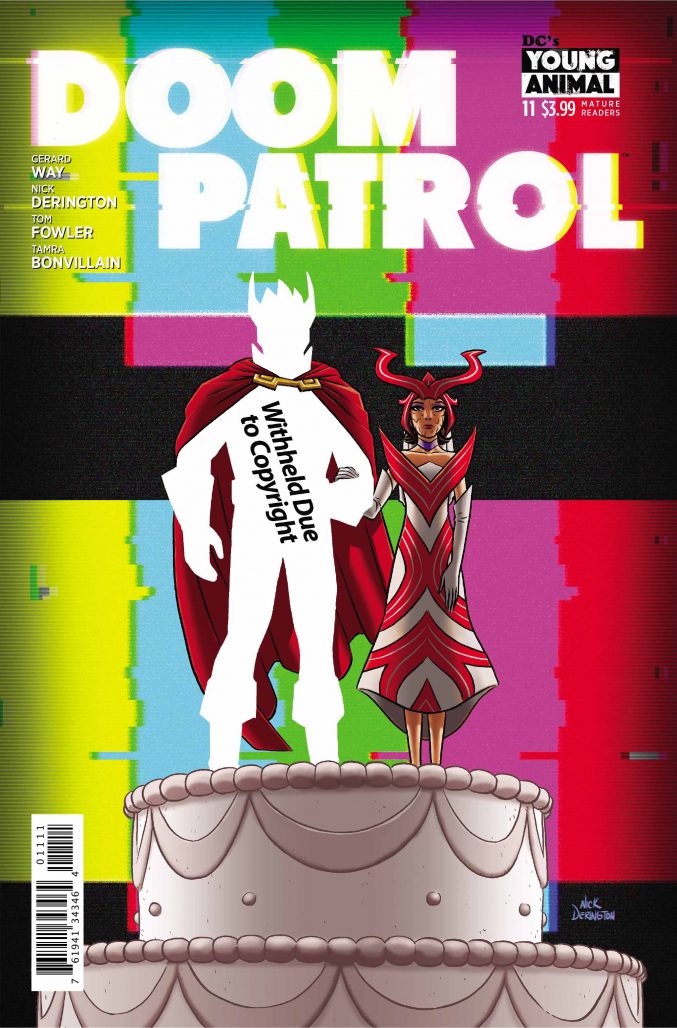 Round-Up
Round-Up
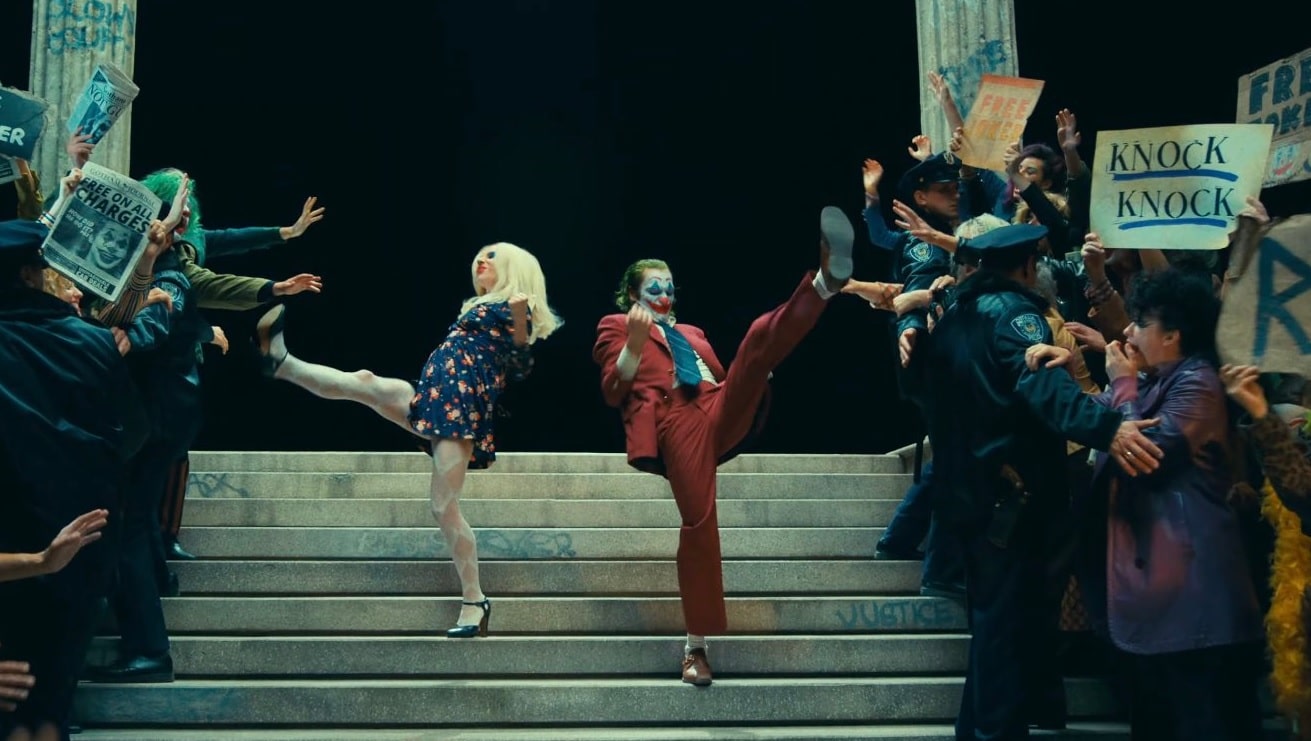

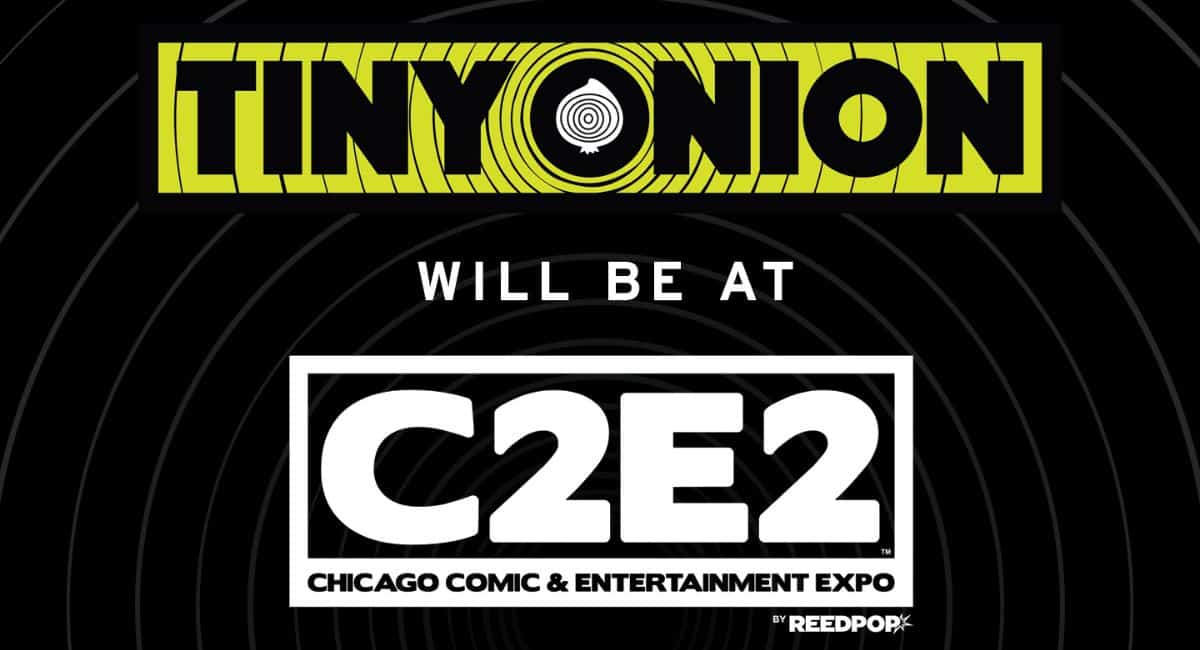


Venditti is ending his run of “HJ&TGLC” with issue 50? That’s news to me.
Well, nevermind. I haven’t been paying attention. I Googled and see that Venditti leaving the book has been pretty extensively reported. Move along. Nothing to see here.
Comments are closed.